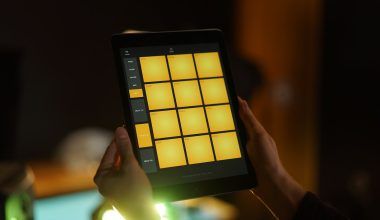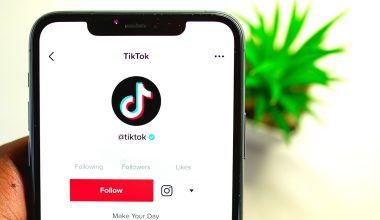If you’re an independent artist, getting your music heard by people worldwide is probably one of your biggest dreams. Thankfully, technology has made it easier than ever to Distribute your album on all digital stores as an independent artist. Whether you’re just starting out or you’ve been in the game for a while, this guide will walk you through everything you need to know to get your music on platforms like Spotify, Apple Music, Amazon Music, and more.
Why Distributing Your Album Digitally is Important
In today’s music industry, digital distribution is the key to reaching a global audience. Years ago, artists had to rely on physical copies and local sales to get their music out there. Now, with just a few clicks, your album can be available to millions of listeners across the world. Distributing your album on all digital stores as an independent artist helps you:
- Reach a wider audience
- Earn revenue through streams and downloads
- Build your fanbase internationally
- Gain industry recognition
The best part? You don’t need to have a big budget or a team to make it happen.
Choosing the Right Digital Distribution Service
There are many distribution services available today that can help you get your album onto digital stores. Some of the most popular ones include:
- DistroKid – Affordable and fast, perfect for independent artists who want unlimited uploads.
- TuneCore – Great for artists who prefer a flat fee per release with 100% revenue retention.
- CD Baby – Offers both physical and digital distribution along with marketing support.
- Amuse – Provides free distribution with opportunities for label deals.
- Delivermytune – Known for its AI mastering and distribution combo.
Before choosing a service, consider factors such as pricing, revenue splits, payment frequency, and additional promotional features. Each platform offers different benefits, so pick one that aligns with your goals.
Preparing Your Album for Distribution
Before you distribute your album on all digital stores as an independent artist, it’s essential to prepare your music correctly. This includes:
- Finalizing Your Tracks – Make sure your songs are properly mixed and mastered.
- Choosing the Right Format – Most platforms require WAV files for the best quality.
- Creating Eye-Catching Cover Art – Your artwork should be high-resolution and follow the store’s guidelines.
- Writing Metadata – This includes your album title, track names, genre, and artist name.
- Registering Your Music – Sign up with performing rights organizations (PROs) to collect royalties.
Uploading Your Album to Digital Stores
Once your album is ready, it’s time to upload it. Most distribution platforms have an easy step-by-step process to help you through it. You’ll typically need to:
- Create an account on your chosen distribution service.
- Upload your music files and artwork.
- Add track details, including songwriters and producers.
- Choose a release date and territories where you want your music to be available.
- Review everything before hitting submit.
After submission, it usually takes a few days to a couple of weeks for your music to appear on digital stores.
Promoting Your Album Post-Distribution
Getting your music on all digital stores is just the first step. To maximize your reach and boost streams, focus on promoting your album effectively. Here are some ideas:
- Social Media Marketing: Use platforms like Instagram, TikTok, and Twitter to engage with your audience.
- Music Playlists: Submit your tracks to playlists on Spotify and Apple Music to gain exposure.
- Email Marketing: Build a mailing list and send updates to your fans.
- Collaborations: Work with influencers and fellow artists to expand your reach.
- Live Streams and Gigs: Perform live to promote your music and connect with fans directly.
Understanding Royalties and Payments
One of the best parts of distributing your album on all digital stores is earning royalties. Different platforms pay in various ways, but generally, revenue comes from:
- Streaming royalties (Spotify, Apple Music, etc.)
- Download sales (iTunes, Amazon Music)
- Licensing deals (YouTube Content ID, Sync Licensing)
Make sure you track your earnings and learn how to withdraw funds from your distribution service.
Avoiding Common Mistakes in Music Distribution
While distributing your album as an independent artist, avoid these common pitfalls:
- Ignoring Metadata Accuracy: Incorrect song titles or artist names can cause problems.
- Skipping Marketing Efforts: Without promotion, your music might get lost.
- Releasing Low-Quality Tracks: Quality matters; ensure your music sounds professional.
- Not Setting a Proper Release Date: Rushing your release can result in missed opportunities.
Keeping Up with Trends in Digital Music Distribution
The music industry is constantly evolving, and staying updated with the latest trends can give you an edge. Some current trends include:
- The rise of short-form video platforms like TikTok for music discovery.
- The growing importance of pre-save campaigns on streaming platforms.
- Direct-to-fan sales through platforms like Bandcamp and Patreon.
Final Thoughts
Distributing your album on all digital stores as an independent artist is one of the most rewarding steps you can take in your music career. It allows you to share your creativity with the world, reach new fans, and even earn an income from your passion. With the right preparation, distribution service, and marketing efforts, you can achieve success as an independent artist.
So, what are you waiting for? Start planning your release today and get your music out there for the world to enjoy!
Related Articles:
For further reading, explore these related articles:
- How to Release Your Music on Gaana and Gain Massive Exposure
- How to Release Your Music on Gaana Without a Label
For additional resources on music marketing and distribution, visit DMT RECORDS PRIVATE LIMITED.






